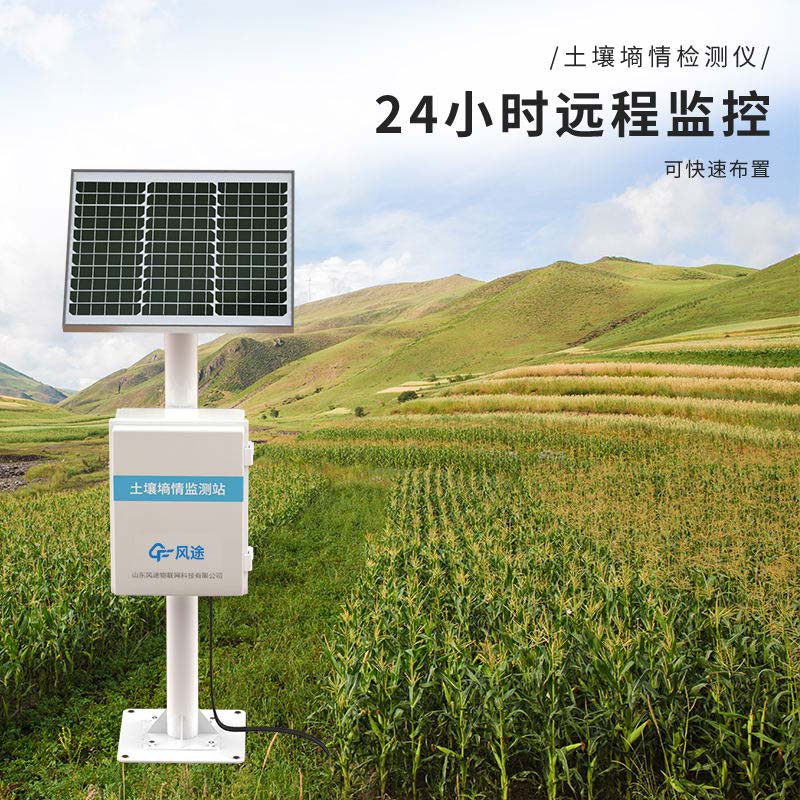Shandong Fengtu IOT Technology Co., Ltd
Sales Manager:Ms. Emily Wang
Cel,Whatsapp,Wechat:+86 15898932201
Email:info@fengtutec.com
Add:No. 155 Optoelectronic Industry Accelerator, Gaoxin District, Weifang, Shandong, China

Sales Manager:Ms. Emily Wang
Cel,Whatsapp,Wechat:+86 15898932201
Email:info@fengtutec.com
Add:No. 155 Optoelectronic Industry Accelerator, Gaoxin District, Weifang, Shandong, China
time:2023-11-08 17:16:25 source:Weather Station viewed:881 time
In the Internet era, soil moisture monitoring systems can be revitalized by combining with technologies such as the Internet of Things, big data and artificial intelligence. For example, real-time monitoring and remote transmission of soil moisture data can be realized by using IoT technology. By deploying various sensors, such as temperature, humidity, PH, etc., data from the soil is collected and transmitted to a cloud-based monitoring center using wireless networks such as 5G/4G/WIFI. In this way, users can check the soil moisture data through the internet anytime and anywhere to keep abreast of the soil condition.
And in the cloud monitoring center, the collected soil moisture data can be processed and analyzed using big data technology. Through the mining and analysis of a large amount of data, the relationship between soil moisture and crop growth can be found, providing a scientific basis for agricultural production. At the same time, big data can also provide real-time monitoring and early warning of abnormal data, so that potential problems can be discovered and solved in a timely manner.
Together with the now hot artificial intelligence technology, it can also be applied to the soil moisture monitoring program. Further enhance the intelligent level of the soil moisture monitoring system. Using machine learning and deep learning algorithms, soil moisture data can be predicted and analyzed, and possible abnormalities can be predicted in advance, providing users with more accurate decision support.
In addition to this, the integration of Internet platforms - through the integration of multiple Internet platforms, such as cell phone APP, web terminal, WeChat public number, etc., can make it more convenient for users to use the soil moisture monitoring system. These platforms can provide real-time data display, alarm notification, data analysis and other functions, enabling users to have a more comprehensive understanding of the soil condition, as well as improving the accessibility and operability of the system.
Big Data can expand the application scope of the soil moisture monitoring system and improve the accuracy and reliability of the system through data sharing and cooperation with other agricultural science and technology enterprises, research institutions and government departments. At the same time, it can also promote the development and innovation of agricultural science and technology and the sustainable development of agricultural production. In this way, it seems that, as stated at the beginning, in the Internet era, by combining technologies such as the Internet of Things, big data and artificial intelligence, the soil moisture monitoring system can be revitalized to provide more scientific and accurate support for agricultural production.

best home weather station conducts real-time observations of indoor and outdoor temperature, humidity, barometric pressure, optical rainfall, pm2.5, pm10 and other meteorological elements....
Water Level Monitoring Station is a technological facility that uses low-power intelligent sensing devices as its core to continuously monitor the water levels of rivers and lakes,This system provides decision support for flood control, disaster reduction, and water resource management by accurately collecting hydrological data....
GNSS receiver price varies significantly depending on the model and features. The high-precision choke coil antenna version costs approximately 6900 yuan. The device fully supports the Beidou satellite navigation system, integrates differential RTK technology, boasts millimeter-level positioning accuracy, and an IP68 protection rating, making it suitable for surveying, disaster prevention, and transportation applications....
In the natural water cycle system, water level and rainfall amount are two crucial parameters, which can affect human production and life as well as the stability of the ecological environment. Monitoring water level and rainfall data is essential for preventing flood disasters and rationally alloca...